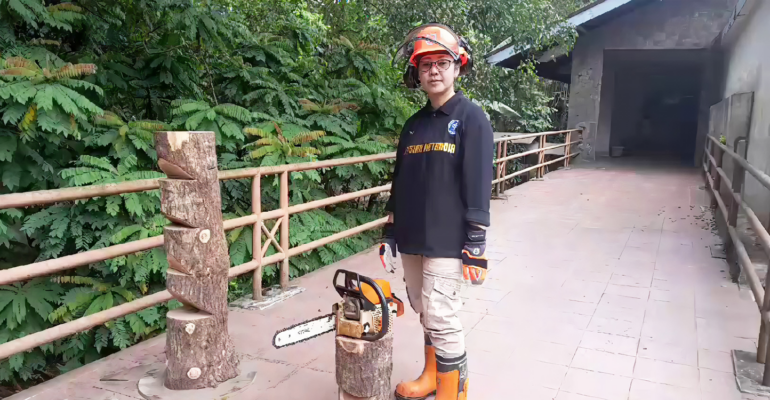IPB University Expert: Health and Safety of Forestry Workers at the Local Level Has Not Been Given Much Attention

IPB University Professor of Forestry Ergonomics, Prof Efi Yuliati Yovi has highlighted the safety and health aspects of forestry workers in Indonesia, most notably those who work at the site level. She said that site-level forestry workers are still faced with various challenges that are threatening health, safety, work productivity, and work comfort.
According to her, these challenges can be answered with an ergonomics approach. Ergonomics is a science that studies and examines the interaction of humans, tools, and work systems. Ergonomics is being used to improve the quality of the work environment in the forestry sector. However, this approach has not been widely implemented in Indonesian forestry, especially for workers at the site level.
“In fact, a comprehensive ergonomics approach can reduce the potential for ergonomic and occupational safety and health (K3) problems, while at the same time increasing work efficiency and productivity for forestry workers, which is an important requirement in achieving better forest management,” said Prof Efi during the Press Conference of the Pre Scientific Oration of Professor of IPB University online, (18/7).
Prof Efi also explained the causes of ergonomics and OSH that have not been optimally applied in the Indonesian forestry sector. First, ergonomics is still being considered as a cost center. In the event, based on her research, only two percent of the budget is needed for OHS protection, and that is much smaller than the cost of dealing with accidents.
The next reason is the company’s lack of awareness of forestry workers, especially at the site level. “In the mining and energy sector, they have already calculated (ergonomics). So they are aware that worker safety is the brand image of a company. In the forestry sector, it has not yet been built,” she said.
In the perspective of workers, said Prof Efi, aspects of OSH knowledge and the use of personal protective equipment (PPE) are on the low side. Workers also do not pay attention to these aspects because it can take up time. Taking up time can mean a loss of their income.
“So the reason is that ergonomics and OSH are still considered a cost center, there is no proper supervision, the wage system, and the level of knowledge of workers. All of those are like a vicious circle. Hence, we have to break the circle in order to unravel this problem,” said Prof. Efi.
Prof Efi suggested the Ministry of Environment and Forestry (KLHK) to be concerned about the safety aspects of forestry workers at the site level. She said, KLHK could have created a special directorate that is related to ergonomics or OSH aspects like at other ministries.
“I would say that organizing, managing, and managing becomes easy. So we can know exactly what is happening and what we need to do, because we understand the situation on the site,” she said.
Furthermore, Prof Efi also added, the government has to ensure that site-level forestry workers are the competent ones. So far, there is no competency scheme for workers at the site level. (MHT/Rz) (IAAS/ZQA)



